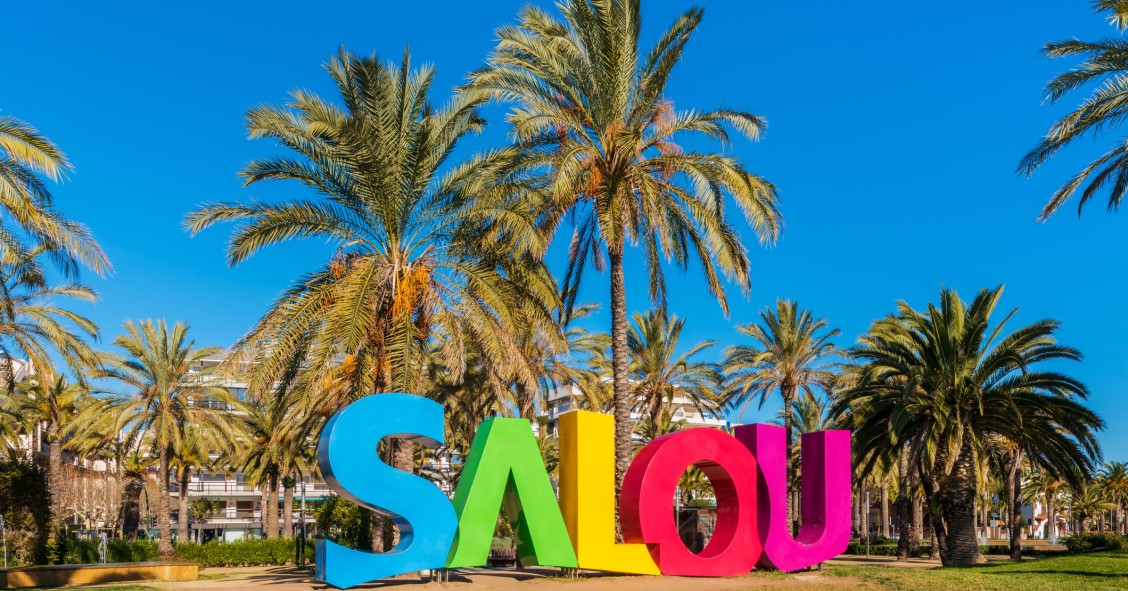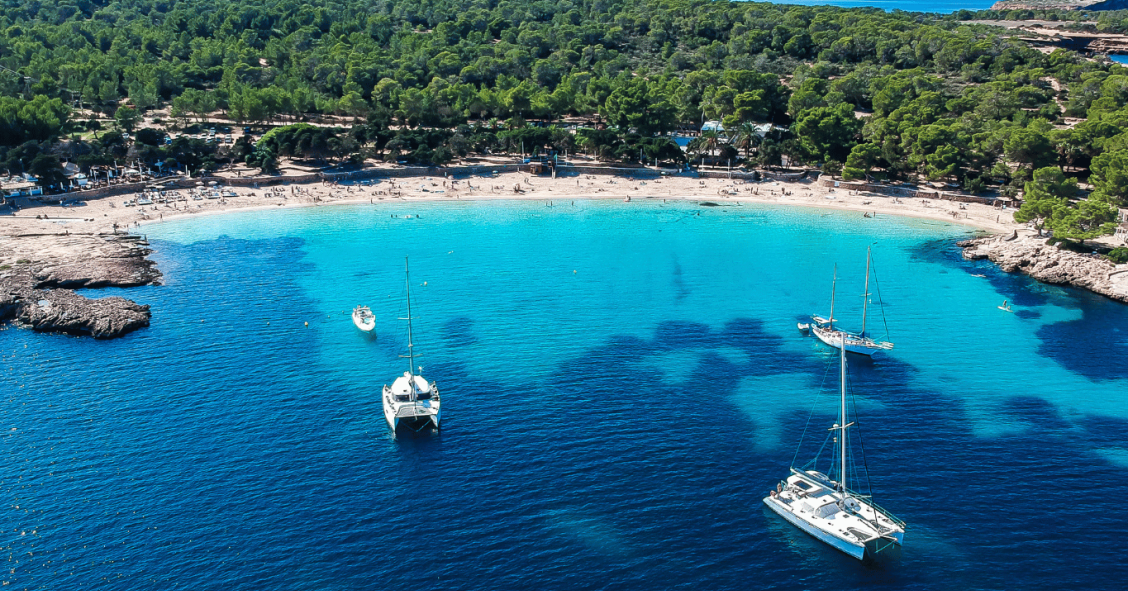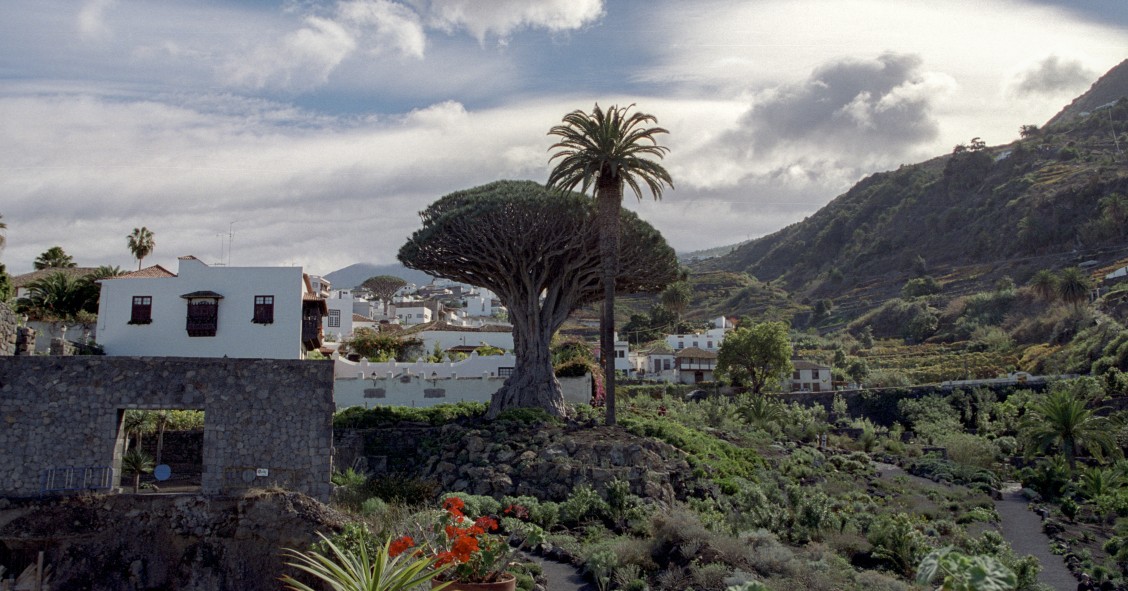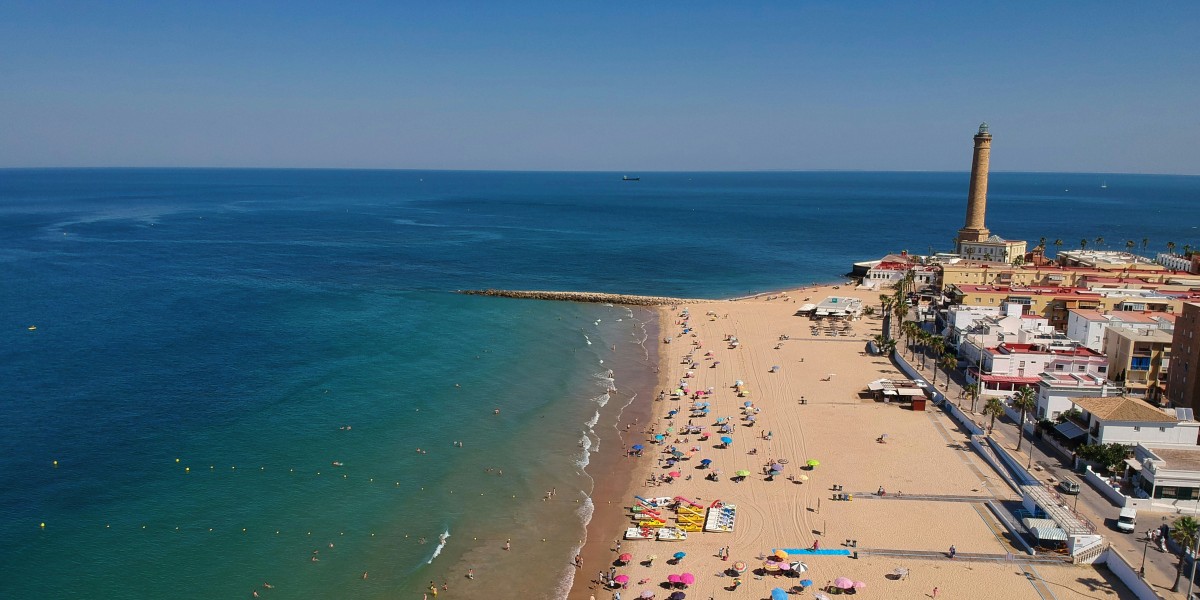
The Blue Flag is a bit of a badge of honour for Spain’s beaches, recognised all over the world for setting the standard when it comes to water quality, safety and eco-friendly management. If you see that famous Blue Flag fluttering over the sand, you can be pretty confident the beach has decent facilities – think well-kept loos, lifeguards and easy access for everyone. Spain always does well here, with coastal towns upping their game each year to meet the strict criteria. The result? Plenty of Blue Flagged beaches along Spain’s shores where you can swim with peace of mind, under those clear Mediterranean or Atlantic skies.
Spain’s record-breaking number of Blue Flag beaches
Spain has smashed its own record yet again for Blue Flag beaches in 2025, leading the world when it comes to clean, well-kept coastline. This year, over 600 beaches across the country earned Blue Flag status. It’s a real testament to the country’s long-term focus on making beaches safe, accessible and environmentally sound.
Best Spanish Blue Flag beaches to visit in 2025
Spain really sets the bar when it comes to variety—whether you’re after dramatic cliffs, see-through waters or a place where you can swim while the kids build sandcastles. Here are some headline Blue Flag beaches for 2025, each with something a bit special to offer.
San Miguel Cabo de Gata, Almería
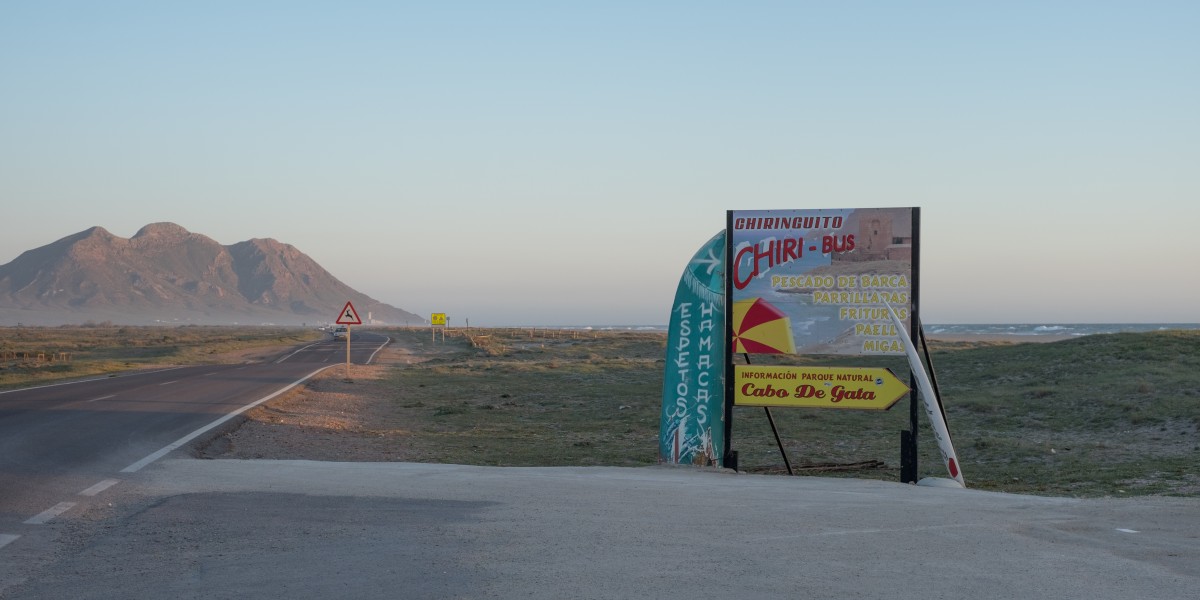
Tucked away in a natural park, Cabo de Gata is all wild headlands, volcanic rock and hidden coves with crystal-clear water. Recently said to be home to the most beautiful beach in the world by the New York Times, this spot draws snorkellers and walkers, with ragged scenery and barely a hotel in sight. You’ll want to bring sturdy shoes for exploring the trails, and maybe avoid the midday sun in July and August.
- How to reach: drive from Almería (about 40 minutes); limited public transport.
- Best season: late spring and early autumn for fewer crowds.
- Facilities are low-key, so pack a picnic and plenty of water.
- Eco tip: stick to marked paths and take all rubbish with you to help protect the fragile ecosystem.
Playa del Inglés, Gran Canaria
A favourite for its huge stretch of golden sand and lively social scene, English Beach ticks all the boxes for easy holidays and safe swimming. The beach is LGBTQ+-friendly and is also a popular nudist beach in Spain. They have facilities for families, including water sports and surf schools.
- How to reach: serviced by frequent buses from Maspalomas and nearby towns.
- Best season: year-round, thanks to the mild Canary Island climate.
- Facilities: showers, changing rooms, lifeguard posts, and wheelchair-friendly routes.
- Eco tip: respect local rules around protected dune zones, as the Maspalomas dunes are a fragile habitat.
As Catedrais, Galicia
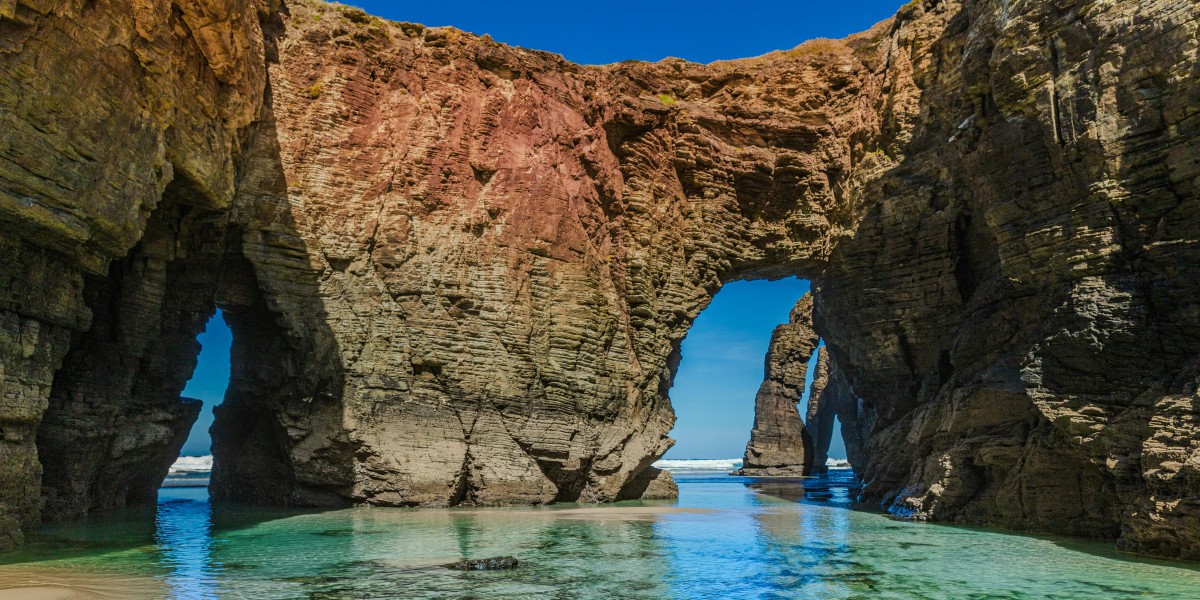
Renowned for its striking sea arches and caves carved by the Atlantic, As Catedrais (‘The Cathedrals’) beach is as much a sight as a swim. At low tide, you can walk under the giant arches and explore mossy passageways. Booking ahead is wise in summer, as visitor numbers are limited.
- How to reach: 10 km from Ribadeo; easiest with a car.
- Best season: anytime, but aim for low tide to see the formations.
- Facilities: car park, toilets near the entrance, and nearby cafés in Ribadeo.
- Eco tip: respect access rules and don’t climb the rock formations.
Playa de Helgueras, Cantabria
With shallow waters and a sandbar that appears at low tide, Helgueras is a hit with families and kite surfers. There are rock pools for exploring and grassy dunes behind the beach, but it never gets too crowded, even in peak season.
- How to reach: walking distance from Noja town centre; buses from Santander.
- Best season: June–early September for warmest water.
- Facilities: Lifeguards in summer, free parking, and occasional food trucks.
- Eco tip: Don’t disturb wildlife in the dunes and always pick up after yourself.
Cala Benirrás, Ibiza
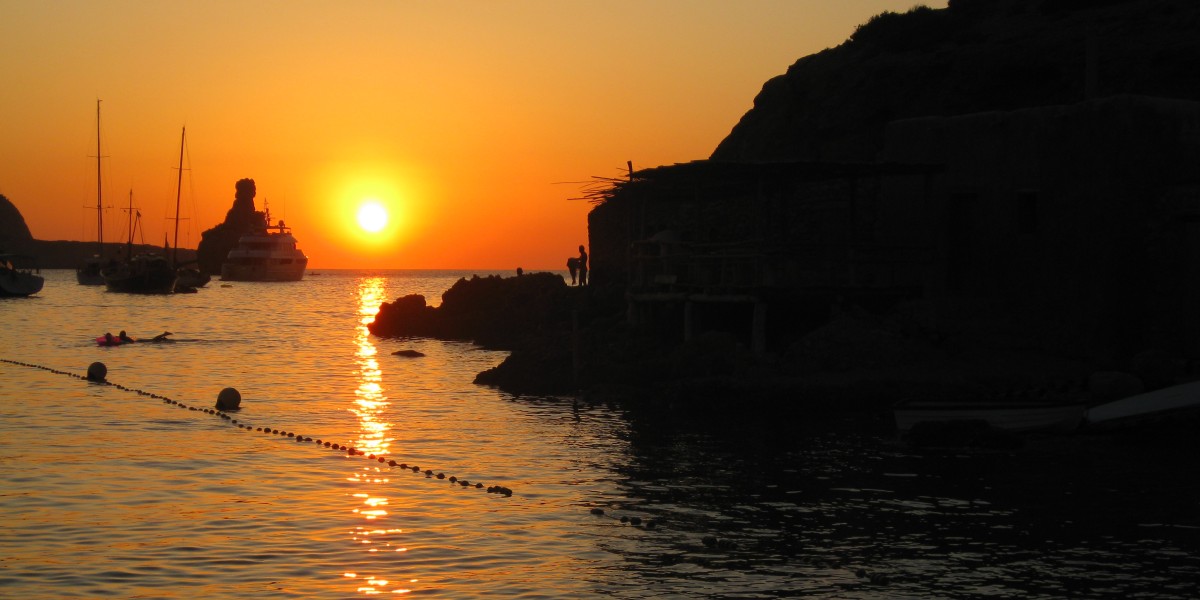
Famous for its Sunday evening drum gatherings, Benirrás is a picturesque cove with pine-draped hills and clear waters. You’ll spot snorkellers, families, and the occasional impromptu music jam. Parking is limited, and the road gets busy, especially at sunset.
- How to reach: 25 minutes by car from Ibiza Town.
- Best season: May, June or September for a quieter experience.
- Facilities: a few beach bars, sunbed hire, and basic facilities.
- Eco tip: bring a reusable water bottle and avoid single-use plastics.
Playa de las Salinas, Almería
This long, sandy stretch is beloved by locals for its open space and strong waves, great for bodyboarding and brisk sea swims. It’s recognised as one of the thirty beaches in the world with the whitest sand. It’s easily accessible and spotlessly maintained, with lifeguards and accessible walkways for all ages and abilities.
- How to reach: 15 minutes by car from Almería; local buses are also available.
- Best season: May–September for reliable sun.
- Facilities: showers, lifeguard stations, accessible ramps, and beachside chiringuitos.
- Eco tip: use the recycling bins and look out for marked wildlife areas, especially as this zone borders a nature reserve.
Cala Granadella, Alicante
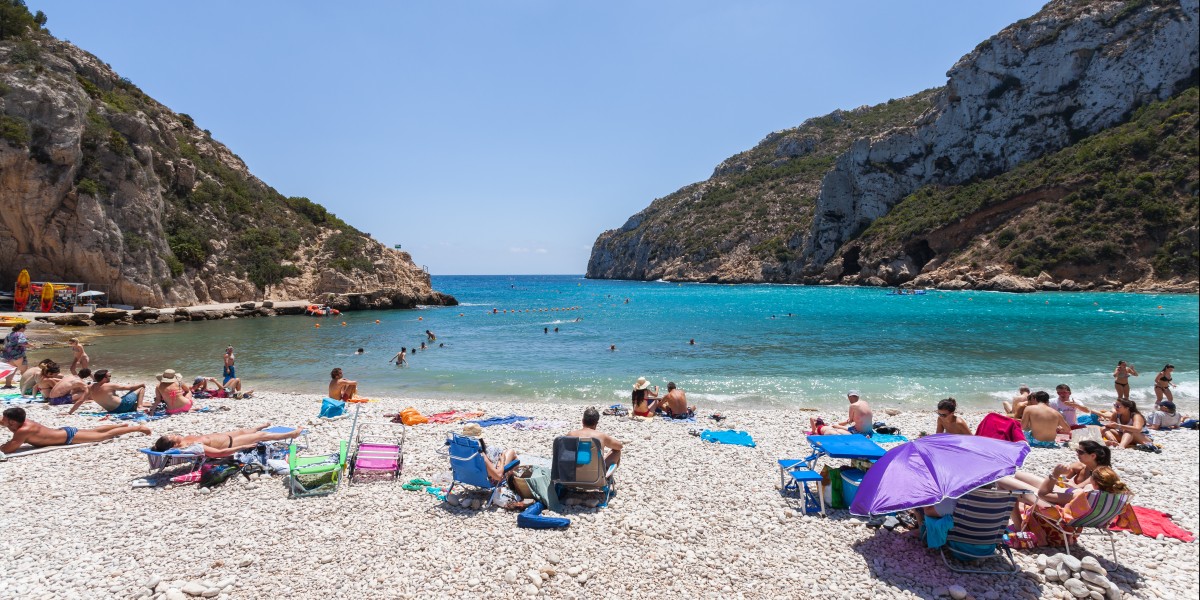
Cala Granadella is a small, pebbly cove boasting some of the clearest turquoise water on the Costa Blanca. Framed by pine-clad hills and rugged cliffs, it’s a favourite for snorkelling and kayaking, with underwater life easily spotted just off the shore. It's a great family-friendly beach in Spain with shallow entry into the water and Blue Flag-level cleanliness.
- How to reach: Best by car from Jávea centre (about 20 minutes), though parking is limited in peak season.
- Best season: Late spring or September for quieter days and warm seas.
- Facilities: Sunbed hire, nearby beach bars, lifeguard presence in summer, and basic toilets.
- Eco tip: Stick to designated pathways, avoid stepping on fragile dune plants, and take litter home to help preserve this beautiful cove.
Zona de Banys Fòrum, Barcelona
Zona de Banys Fòrum isn’t a typical sandy beach but stands out for its smart design—a seaside bathing area with steps, decking, and safe access points right into the Mediterranean. It’s especially popular with locals looking for somewhere easy to cool off without the hustle of Barcelona’s central strips.
- How to reach: hop on the metro (El Maresme-Fòrum station) or take the tram—both stops are a quick stroll away.
- Best season: late spring to early autumn for the best swimming conditions.
- Facilities: decked sunbathing areas, showers, changing rooms, lifeguards, and adapted access for people with reduced mobility.
- Eco tip: use the bins provided, avoid swimming outside the marked zones, and keep an eye out for local signage about water quality after storms.



